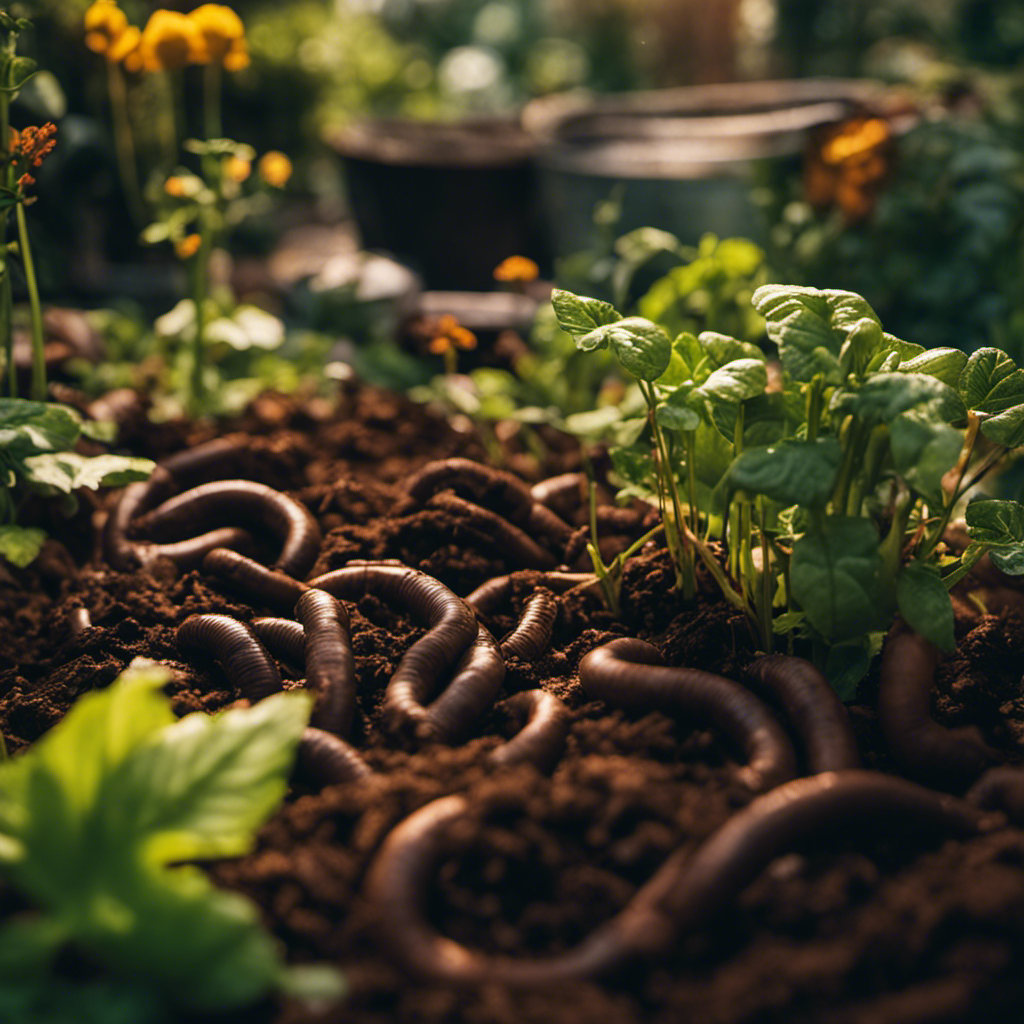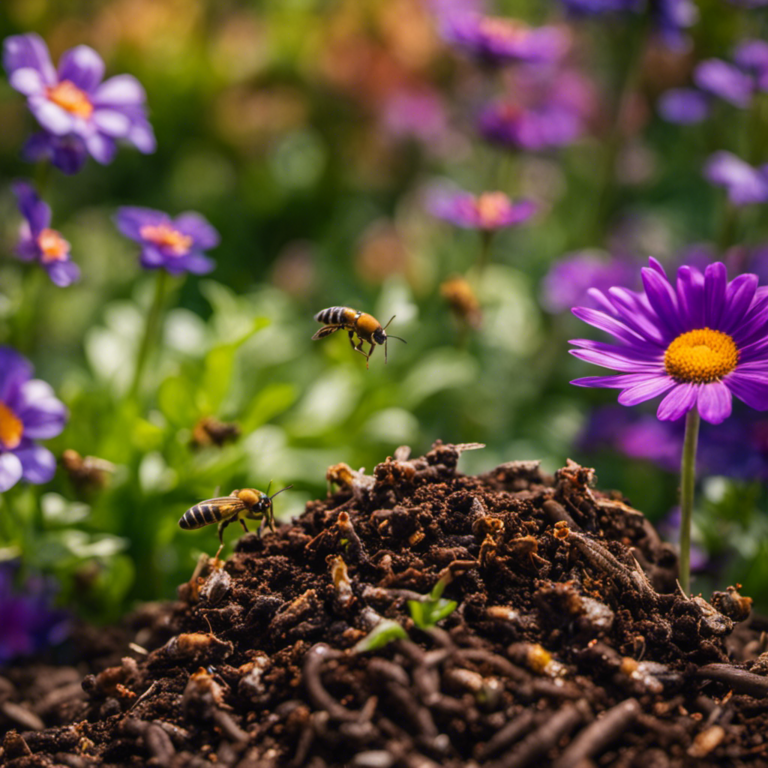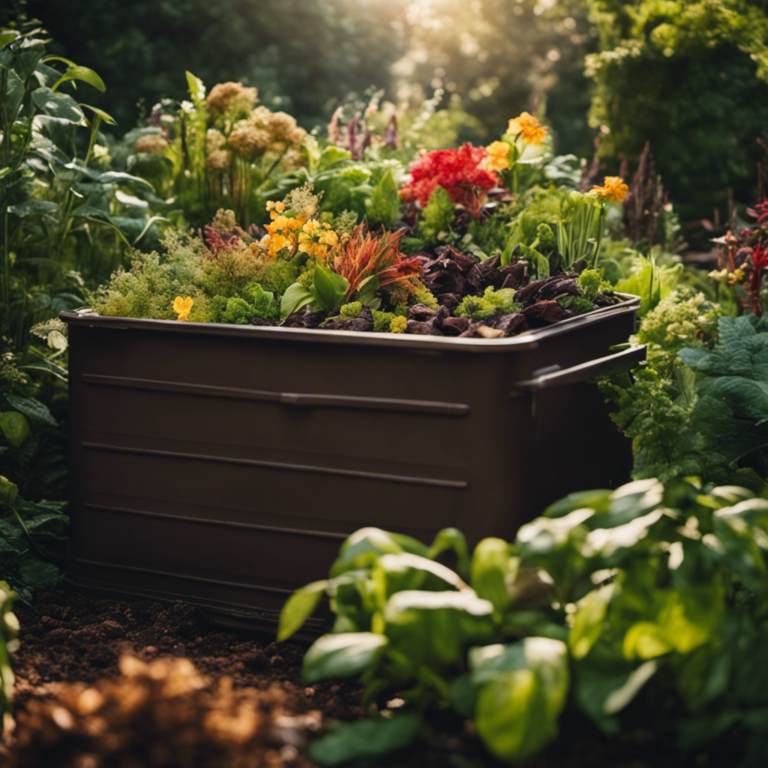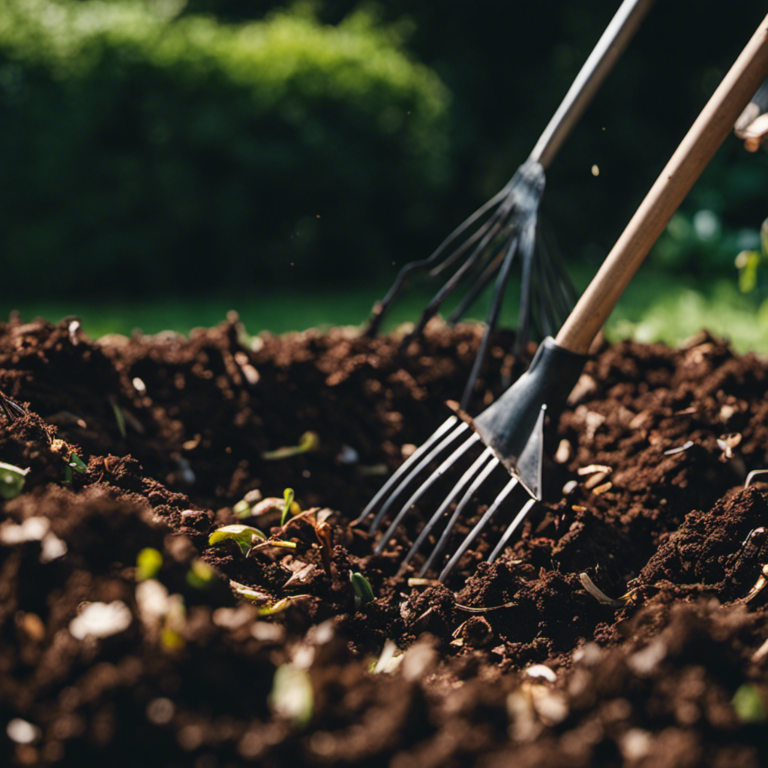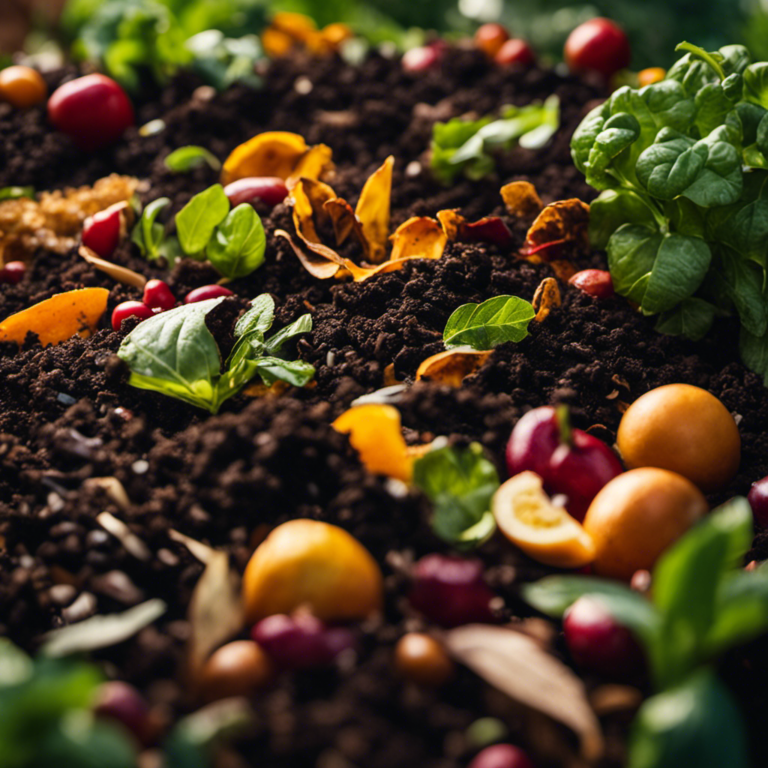As an avid gardener, I’ve discovered that composting is the key to unlocking the full potential of my garden. It’s like a secret potion, enriching the soil and nourishing my plants.
In this article, I’ll share with you some effective composting techniques that will not only make your gardening more environmentally friendly but also benefit your surroundings.
We’ll explore both traditional methods and innovative approaches such as vermicomposting and bokashi composting.
With these tried and tested techniques, you can transform your garden into a thriving paradise.
Key Takeaways
These composting techniques provide a more environmentally friendly approach to gardening by harnessing the power of nature’s resources. From traditional composting methods to vermicomposting with worms, fermenting kitchen waste with bokashi composting, utilizing autumn leaves for leaf mold, or enriching the soil with compost tea, each technique contributes to a sustainable and eco-friendly garden.
By adopting these techniques, gardeners can create nutrient-rich soil, reduce waste, and promote a healthier environment for their plants and themselves. These practices not only benefit the garden but also contribute to a greener and more sustainable future.
Traditional Composting Methods
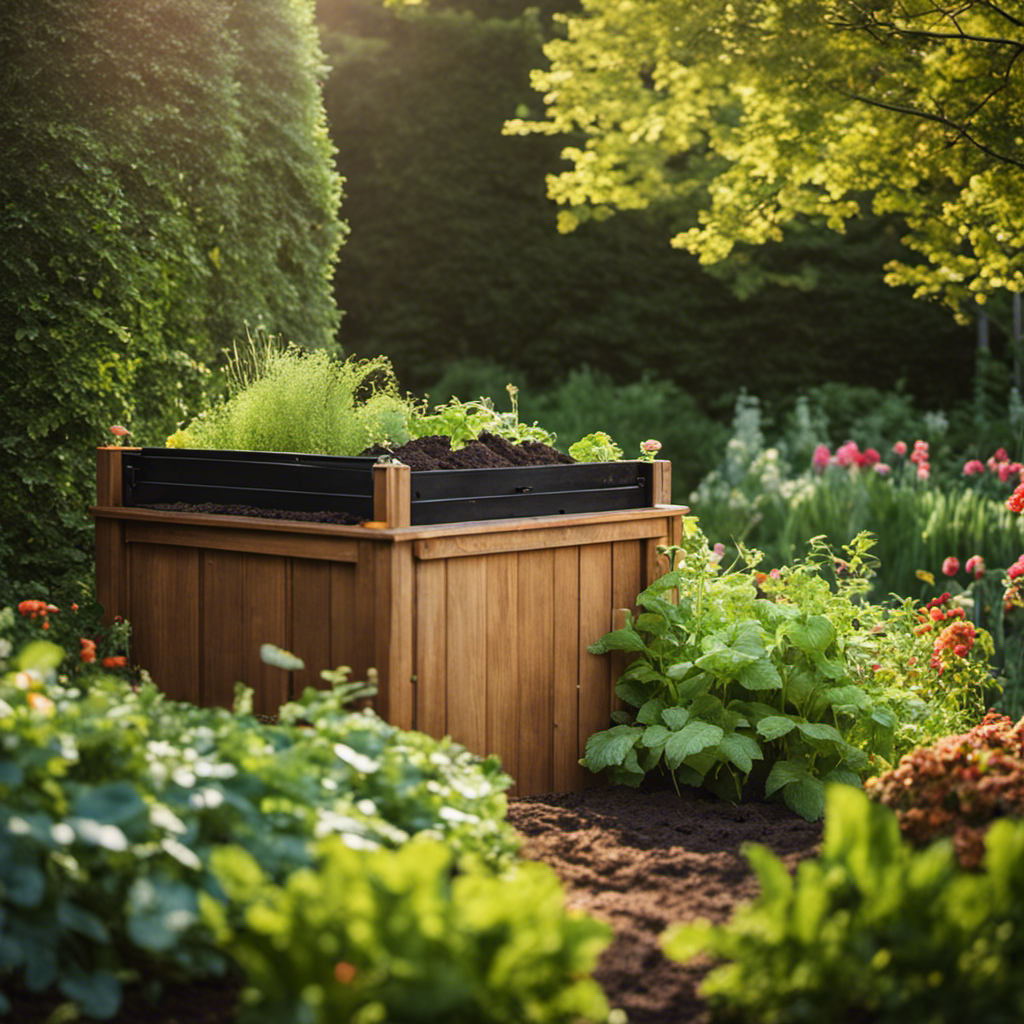
One of the traditional methods I really enjoy for composting is using a three-bin system. This method has been used for a long time and is a great way to efficiently compost organic waste and create nutrient-rich soil for gardening.
The three-bin system involves having three composting bins placed side by side, each serving a specific purpose in the composting process.
The first bin in this system is called the active bin, where you add fresh organic material. This can include things like kitchen scraps, yard waste, and other biodegradable materials. It’s important to maintain a proper balance of carbon-rich and nitrogen-rich materials for optimal decomposition. Regularly turning and mixing the contents in this bin helps speed up the composting process.
Once the active bin is full, the contents are transferred to the second bin, which is known as the maturing bin. Here, the compost undergoes further decomposition and stabilization. The composting process continues, but at a slower rate.
Finally, the third bin, known as the finished bin, is where the fully composted material is stored and ready to be used in the garden. This dark, crumbly compost is rich in nutrients and can greatly improve soil fertility.
Using a three-bin system allows for a continuous composting cycle, ensuring a steady supply of nutrient-rich compost for your garden. It’s an efficient and effective traditional composting method that can meet the needs of any gardener.
Vermicomposting: Using Worms for Composting
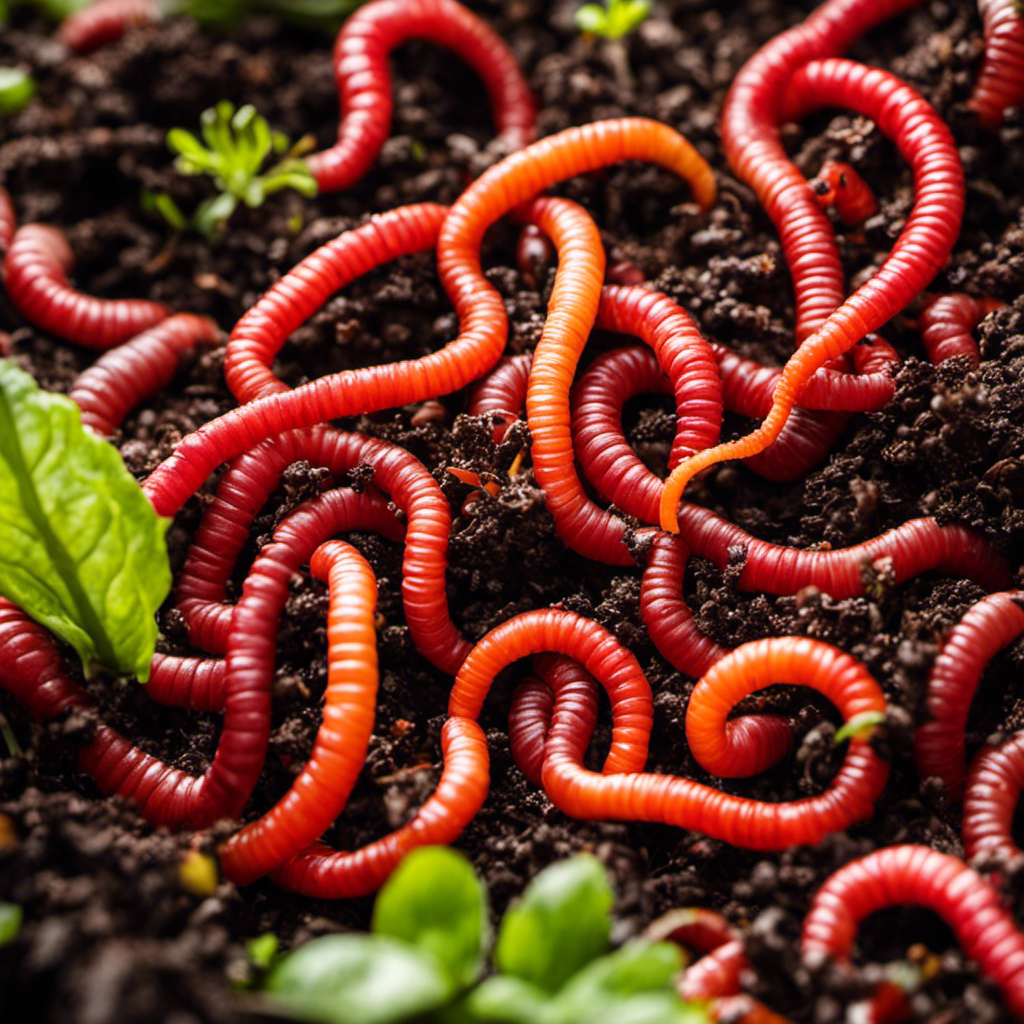
Using worms for composting, also known as vermicomposting, is a fantastic method for effective and sustainable waste management. This process harnesses the power of earthworms to decompose organic waste and convert it into nutrient-rich worm castings.
Let’s explore three key benefits of vermicomposting:
-
Efficient waste management: With a worm bin, you can divert a significant amount of kitchen scraps, yard trimmings, and other organic materials from landfills. The earthworms consume these materials and transform them into valuable worm castings. This not only reduces waste but also contributes to a greener environment.
-
High-quality soil amendment: The worm castings, also known as vermicast, are a valuable source of nutrients and beneficial microorganisms. Adding them to your garden soil improves its structure, water-holding capacity, and nutrient content. As a result, plants grown in soil enriched with worm castings tend to be healthier, more disease-resistant, and produce higher yields.
-
Simple and low-maintenance: Vermicomposting requires minimal effort and can be done even in small spaces. All you need is a worm bin made of plastic or wood, bedding material like shredded newspaper or coconut coir, and a population of red wigglers (Eisenia fetida) worms. With proper moisture and temperature levels, the worms will happily consume the organic waste and convert it into valuable worm castings.
Bokashi Composting: Fermenting Kitchen Waste
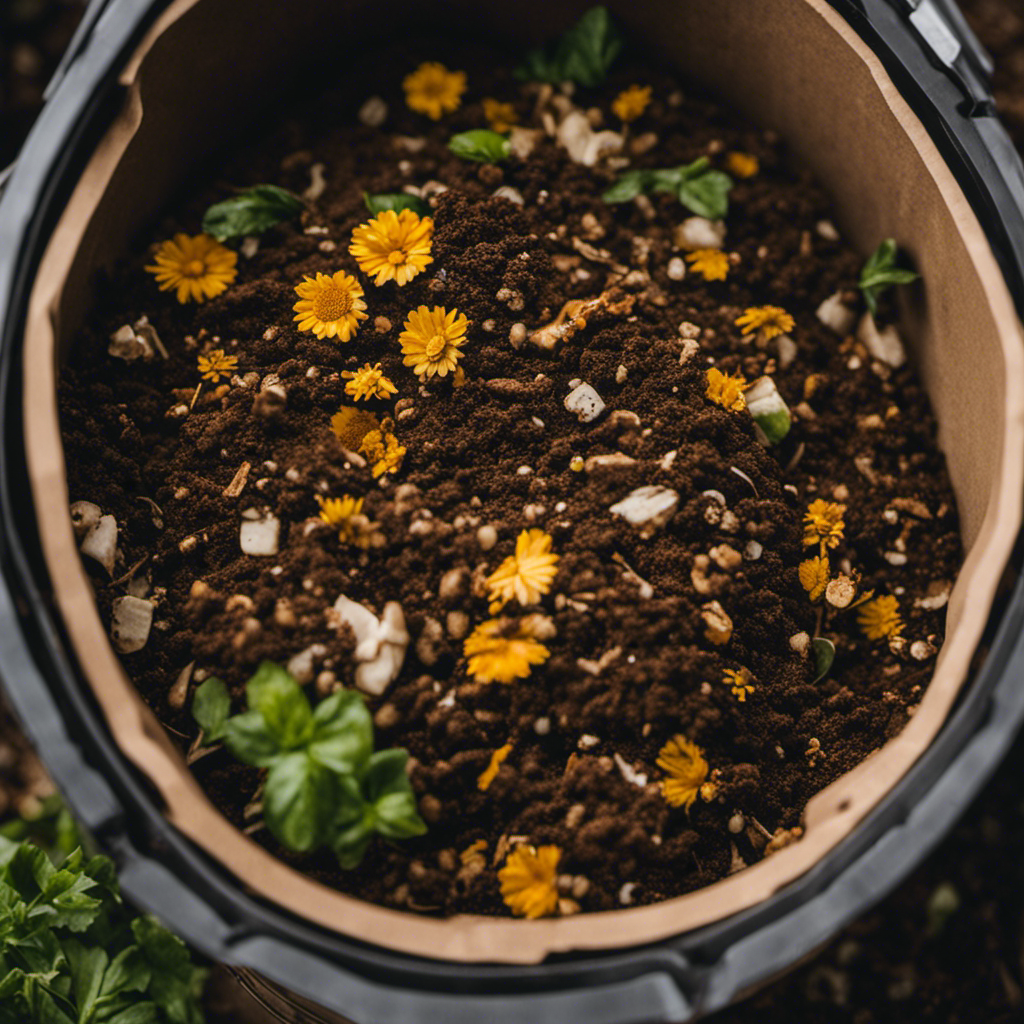
Bokashi composting is a simple and efficient method for recycling kitchen waste into nutrient-rich compost. Instead of using traditional composting methods, which can take a long time and have limitations on what can be composted, bokashi composting relies on a fermentation process using beneficial microorganisms.
To understand how bokashi composting works, let’s explore its benefits in more detail:
-
Rapid Breakdown: The fermentation process in bokashi composting quickly breaks down organic matter, including fruit and vegetable scraps, into a valuable compost material.
-
Odor Control: One of the advantages of bokashi composting is its ability to control unpleasant smells associated with food waste. The fermentation process reduces odors, making it suitable for indoor composting.
-
Increased Nutrient Content: Bokashi composting results in compost with higher nutrient levels. The beneficial microorganisms in the bokashi mix help break down the organic matter, creating a nutrient-rich material that enhances soil fertility.
-
Weed Suppression: The fermentation process in bokashi composting suppresses weed growth. This is particularly beneficial for gardeners as it reduces the need for manual weeding.
-
Improved Soil Structure: Bokashi compost improves soil texture and water retention. It helps create a healthy environment for plants to thrive by promoting better soil structure.
To start bokashi composting, all you need is an airtight container, such as a bucket, and the bokashi mix. This mix contains the beneficial microbes that initiate the fermentation process. Unlike traditional composting methods, bokashi composting can handle a wider range of waste, including meat, dairy, and cooked foods.
After a few weeks of fermentation, the resulting material can be directly buried in the garden or added to a traditional compost pile. This rich organic matter enriches the soil, supports healthy plant growth, and reduces the reliance on chemical fertilizers.
Incorporating bokashi composting into your routine is a sustainable and effective way to recycle food waste and create nutrient-rich compost for your garden. By harnessing the power of beneficial microorganisms, you can contribute to a greener and more environmentally friendly gardening practice.
Leaf Mold: Harnessing the Power of Autumn Leaves
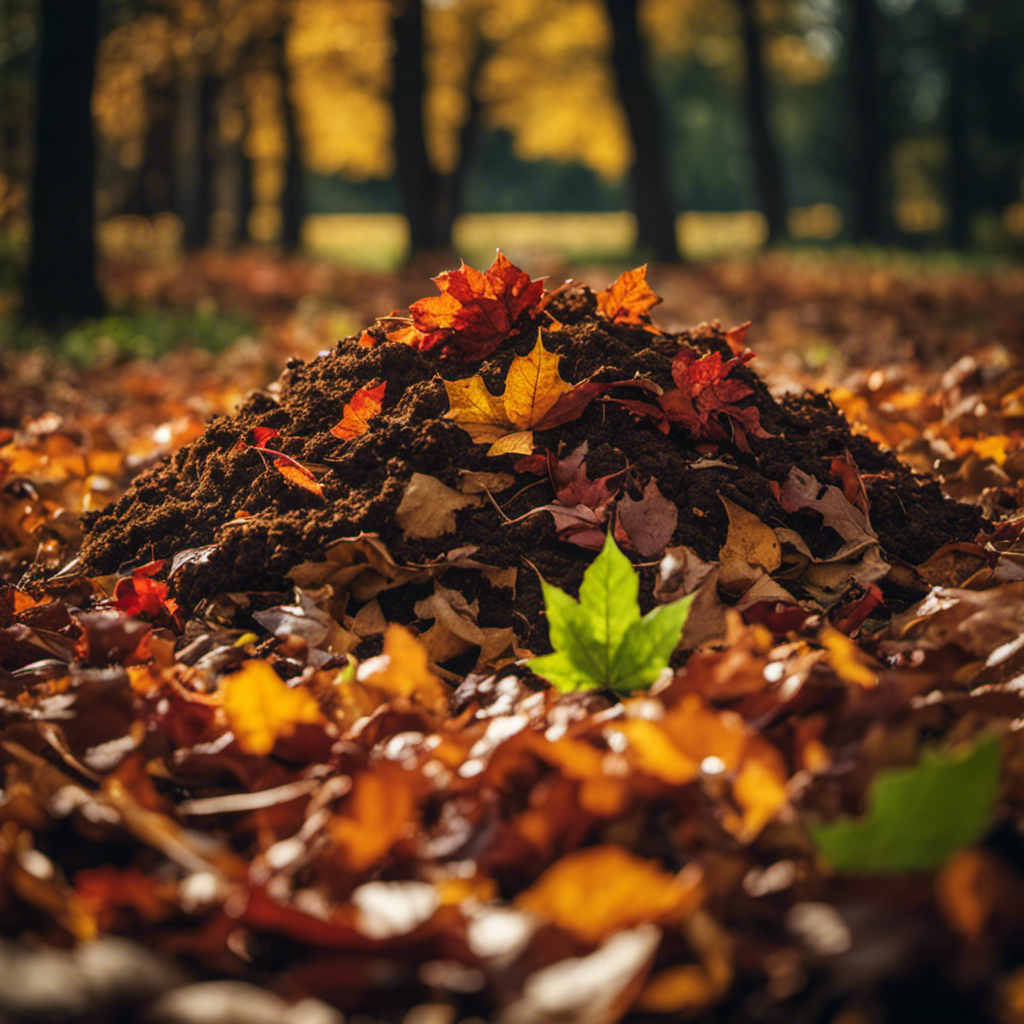
Continuing from the previous section, let’s explore the benefits of using autumn leaves to create nutrient-rich compost known as leaf mold. Harnessing autumn leaves for sustainable gardening is a great way to recycle and make use of the abundant natural resource available during the fall season. Leaf mold acts as a natural fertilizer that can greatly improve the health and productivity of your garden.
Here are three key advantages of incorporating leaf mold into your gardening practices:
-
Nutrient-rich: Autumn leaves are rich in essential nutrients like nitrogen, phosphorus, and potassium. As the leaves decompose, these nutrients are released into the soil, providing a sustainable and organic source of nourishment for your plants.
-
Soil improvement: Leaf mold helps enhance soil structure by improving water retention, aeration, and drainage. This fosters healthier root development and overall plant growth. Additionally, the organic matter in leaf mold acts as a sponge, holding moisture and reducing the need for frequent watering.
-
Weed suppression: Applying a layer of leaf mold to your garden beds can help suppress weed growth. The natural mulching effect of leaf mold inhibits weed seed germination and blocks sunlight from reaching weed roots, effectively reducing weed growth and competition for nutrients.
Compost Tea: Boosting Nutrients for Healthy Plants
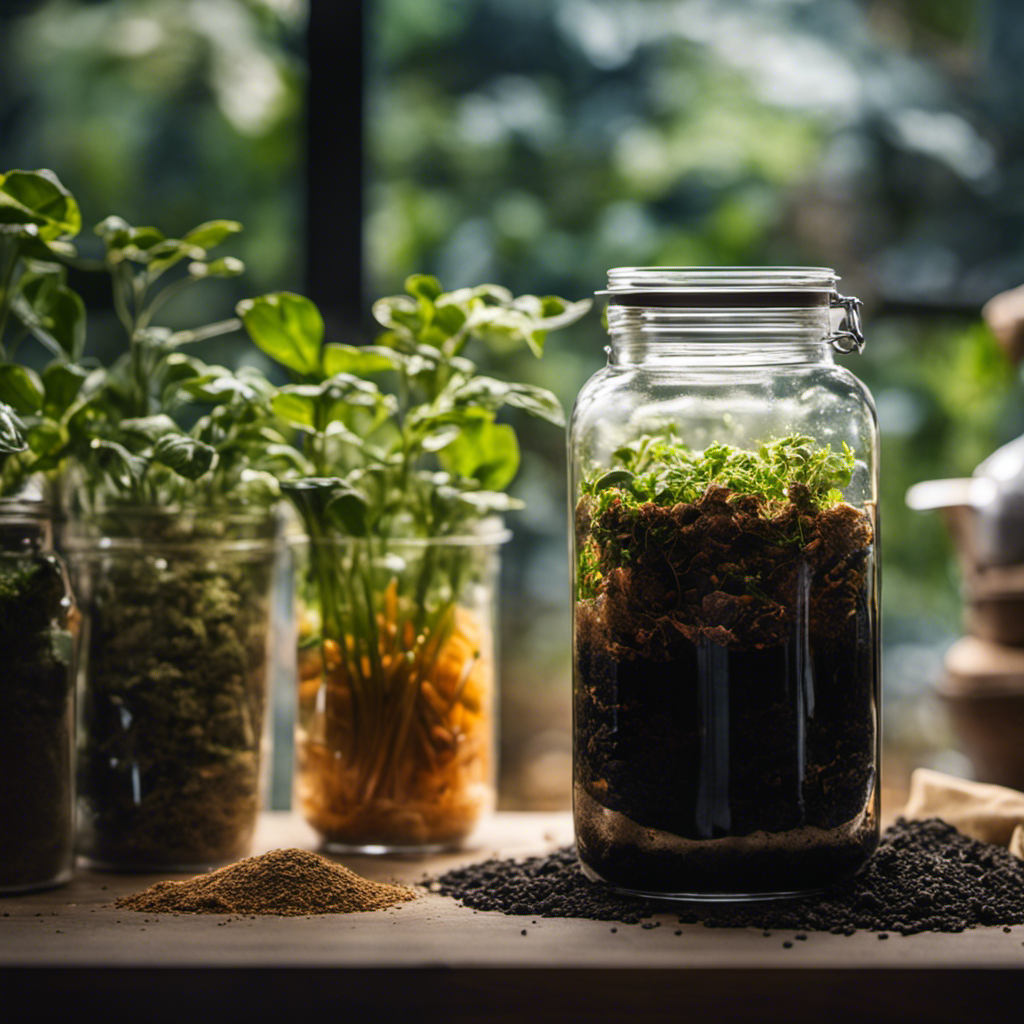
Boosting Nutrients for Healthy Plants: The Benefits of Compost Tea
One effective technique for promoting healthy plant growth and providing essential nutrients is the use of compost tea in your gardening routine. Compost tea, a liquid fertilizer created by steeping compost in water, offers a cost-effective and environmentally friendly solution.
The advantages of compost tea are numerous. It enhances soil structure and fertility by introducing beneficial microorganisms like bacteria, fungi, and protozoa into the soil. These microorganisms aid in breaking down organic matter, making nutrients more accessible to plants. Additionally, compost tea can help suppress plant diseases and pests. The microorganisms in the tea compete with harmful pathogens for resources, reducing their population and preventing their spread.
Creating your own compost tea is a simple process that requires just a few basic ingredients. To make a basic compost tea, gather compost, water, and a brewing container. Fill the container with water and add a generous amount of compost. Allow the mixture to steep for 24-48 hours, occasionally stirring. After brewing, strain the liquid to remove any solid particles, and it will be ready to use on your plants.
Incorporating compost tea into your gardening routine is an excellent way to enrich your soil’s nutrient content and promote healthy plant growth. By making your own compost tea, you can customize the recipe to meet the specific needs of your plants and provide them with the best care possible.
Conclusion
These composting techniques offer a greener approach to gardening by using the power of nature’s resources.
From traditional composting methods to vermicomposting with worms, fermenting kitchen waste with bokashi composting, utilizing autumn leaves for leaf mold, or enriching the soil with compost tea, each technique contributes to a sustainable and eco-friendly garden.
By adopting these techniques, gardeners can create nutrient-rich soil, reduce waste, and promote a healthier environment for their plants and themselves.
